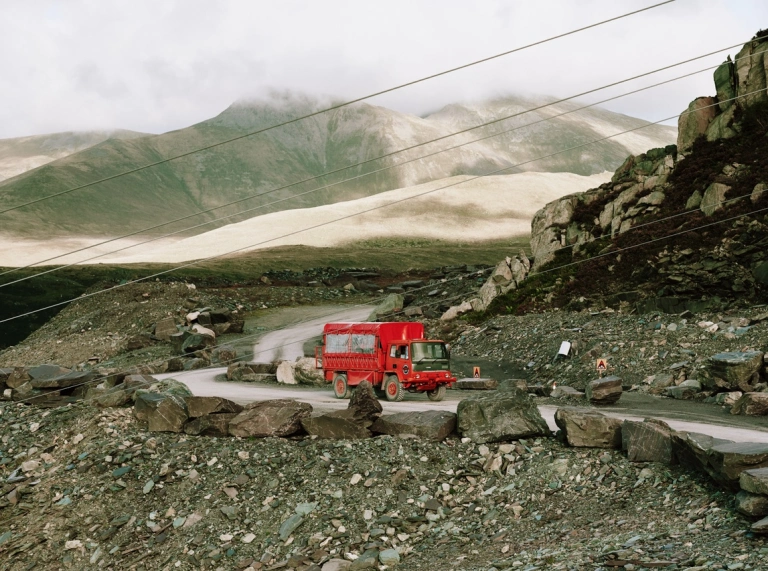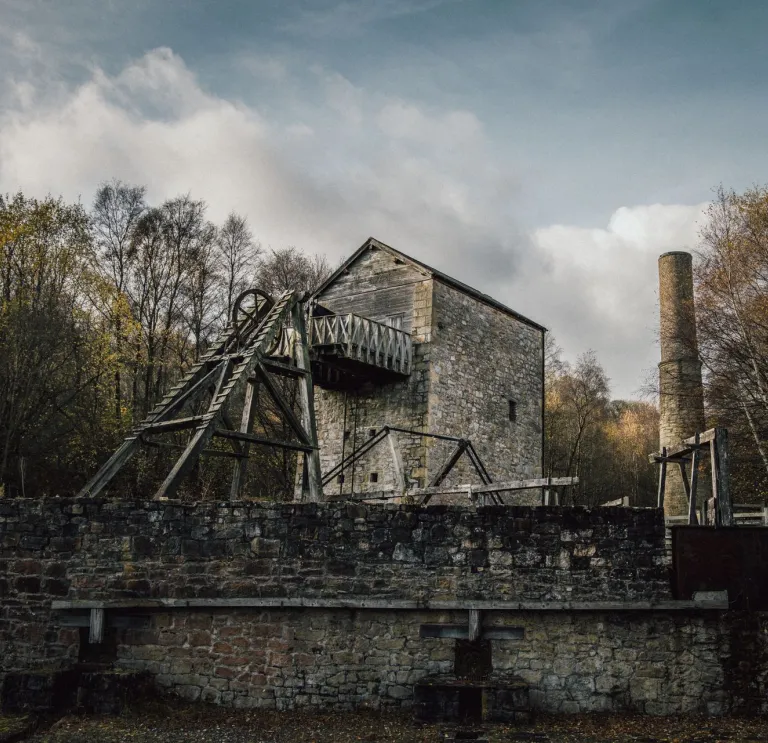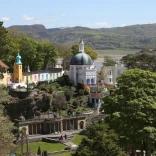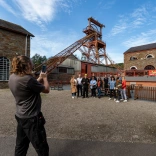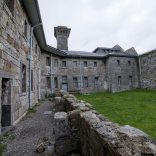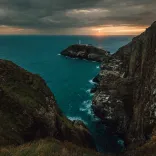Today, North Wales is best known for its stunning landscape including rugged mountains and coastline that attracts visitors to the area. The area has also played important roles in our industrial heritage. It has been awarded two UNESCO World Heritage Sites - North West Wales' Slate Landscape and Pontcysyllte Aqueduct and Llangollen Canal.
Slate industry of North West Wales
Today the Ffestiniog & Welsh Highlands Railway is a popular tourist route. The Ffestiniog Railway was originally built to take slate 13½ miles (22 km) from the mines of Blaenau Ffestiniog to the port of Porthmadog where it was then transported around the world. It is now an integral part of the UNESCO 'Slate landscape of North Wales' World Heritage Site.
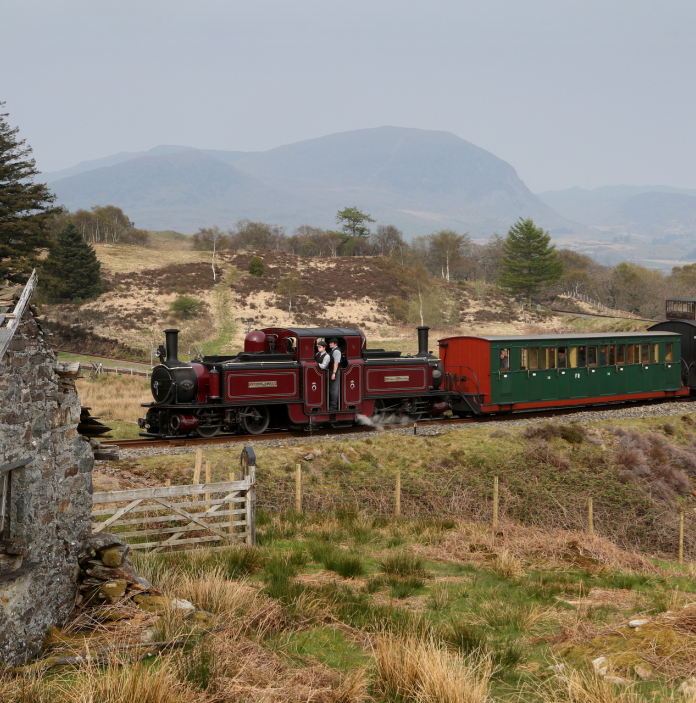
Greenfield Valley, Holywell is located close to the River Dee and Liverpool gave the area an opportunity for international trade. Greenfield Dock had capacity for up to 40 vessels with around 50 tonnes of cargo.
By the end of the 18th century there were many copper and cotton factories. Bowls and manilas for West Africa were produced from coppers sourced at The Parys Mine Company. Copper sheets and bolts for wooden sailing ships were also produced here to protect ships from sea worms in tropical waters. This was a major industry for the area that gave it international status. By now, the population of Holywell was over 5,500 and there was a need for new housing for the workers at Battery Row and Tai Coed.
Decline started in the 19th century because of cheaper imports from abroad resulting in depression and unemployment for the area. New opportunities included Newton-Lyon that took over the old Parys Mine Company sites to begin brass works. Holywell in the 1830s was the third most important area for British based brass making.
During the First World War, Holywell Textile Mill made soldier’s uniforms. The 1920’s saw Courtaulds come on the international scene by making new manmade fibres eg Rayon and by the 1960s there were two new factories at Greenfield with thousands of local people employed. Abbey Paper Mill established in 1821, was another large employer but closed in 1982.
Your clients can explore the museum, and authentic farm buildings with agricultural exhibits which offer many group benefits.
Inigo Jones Slateworks was established in 1861 to produce school writing slates and had to diversify once paper was introduced and produced electrical panels in slate. These were supplied to ships including Queen Mary, Mauritania and the Queen Elizabeth. Today they produce more slate for domestic use including flooring and kitchen surfaces. Workshop tours are available. Audio tours are available in German, French, Spanish Mandarin, Japanese, Welsh and English.
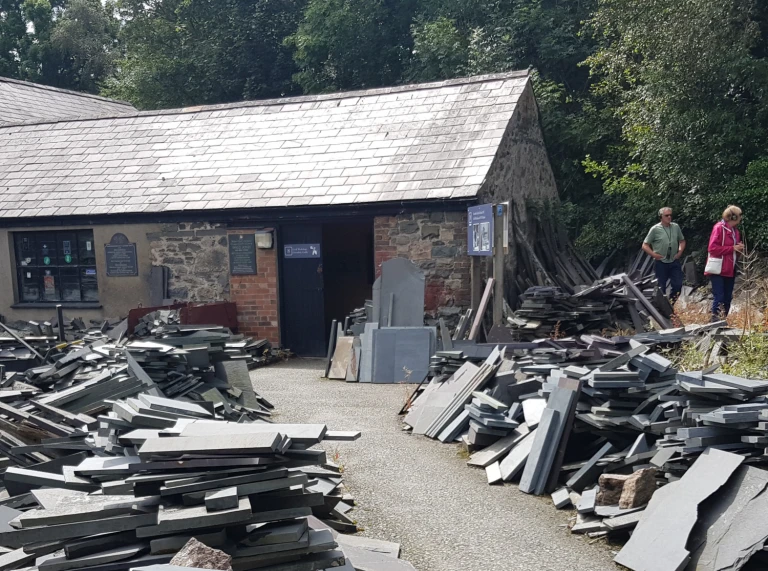
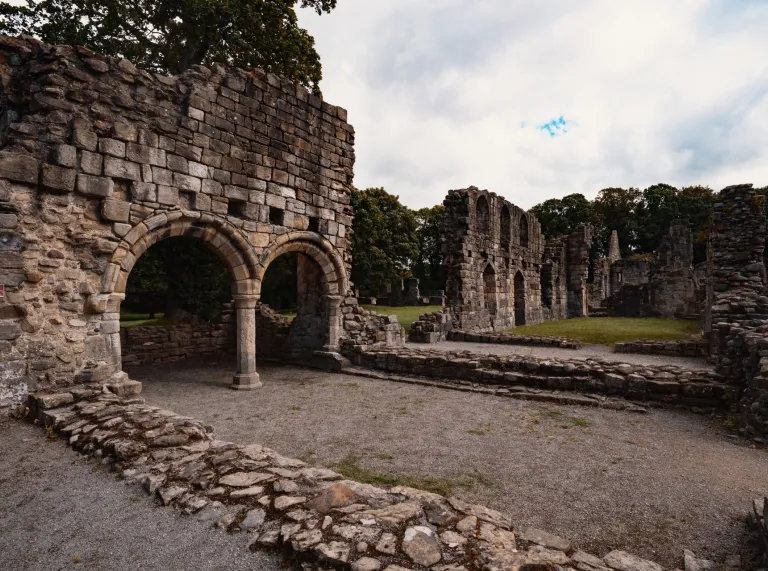
Minera Lead Mines and Country Park near Wrexham is a free heritage attraction and country park. The lead mines offer a glimpse into the industrial past of the beautiful Clywedog Valley. The Visitors Centre at the top of the site features modern, bilingual, interactive interpretations telling the fascinating history of the site dating back to Roman times. The surrounding country park covering 53 acres of grassland, wooded areas, and archaeological sites is available to explore at leisure. Clients can see remains of the lead processing areas from the 18th and 19th centuries, the restored beam engine house, winding engine and boiler houses. Email Minera Lead Mines & Country Park or call +44 (0)1978 757524 for more information.
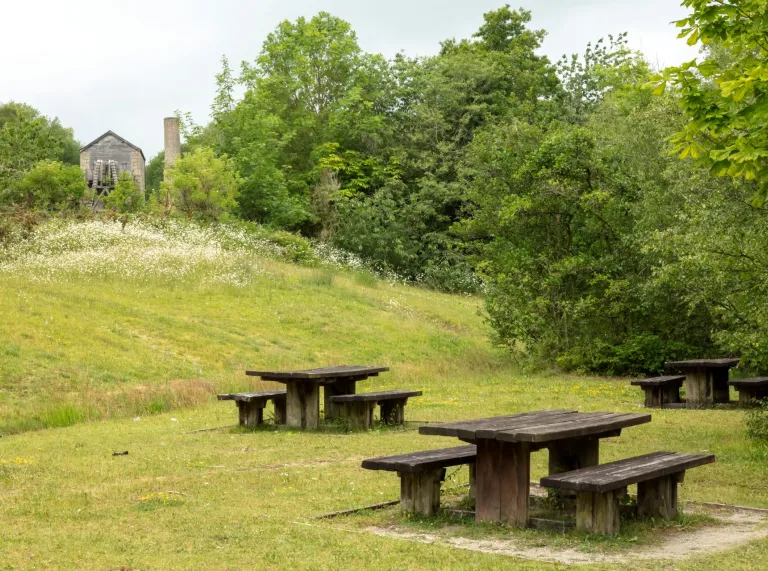
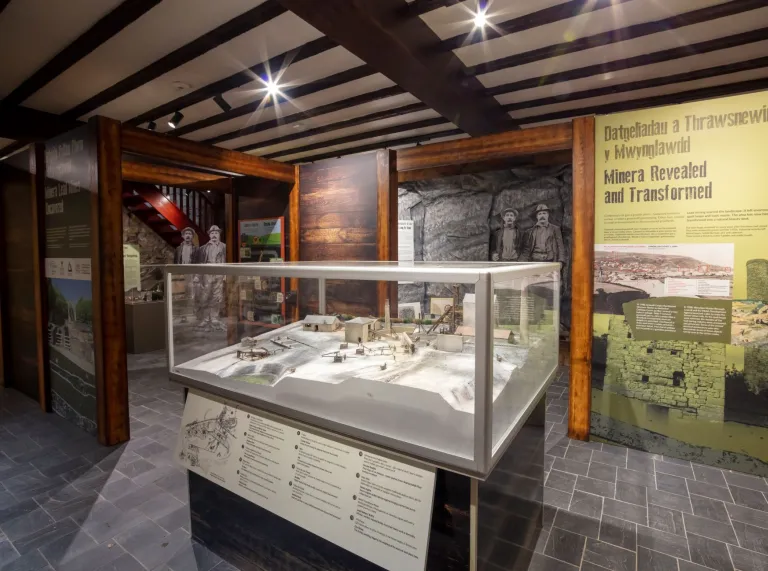
National Slate Museum, Llanberis is one of the sites of the National Museum Wales. It is located in the workshops of the Dinorwig Quarry that once employed over 3,000 men. A visit gives an insight to life as a 19th century slate worker and includes an introductory film, slate splitting demonstrations, visiting the workshops and the slate workers cottages that were originally built near Blaenau Ffestiniog. Please note the museum is closed from November 2024 for major transformation. Visit their website for further updates.
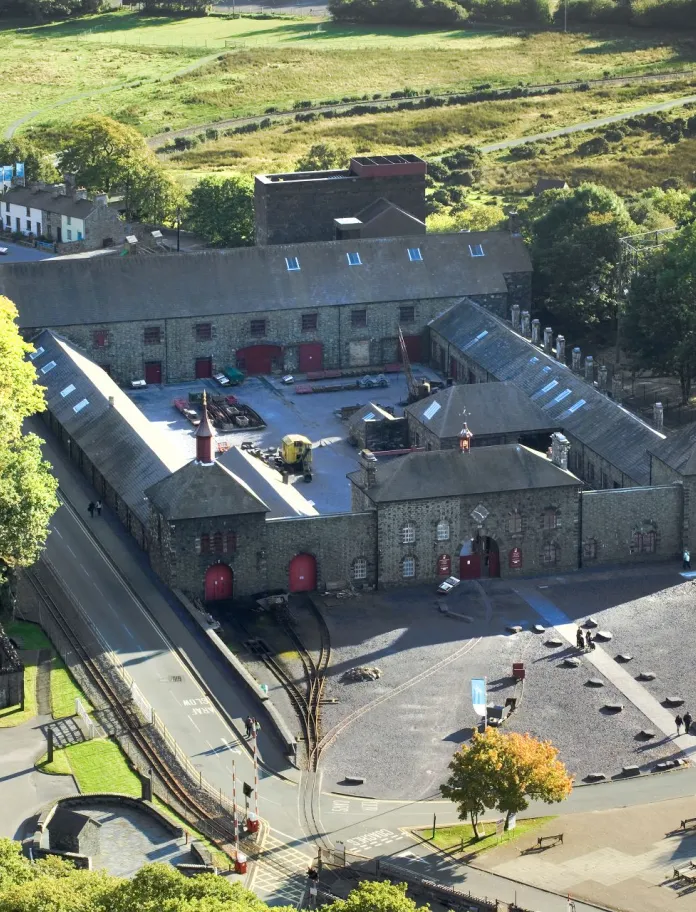
Parys Mountain, Anglesey is an open cast copper mine, mining has taken place on this site since the Bronze Age. In the 1760’s copper ore was found that lead to large scale mining for about 10 years and was known as ‘Copper Kingdom’. Today, the colours of reds, oranges, pinks, browns, purples, greens, yellows, and greys look even more stunning on rainy days.
The 19th century stately home of Penrhyn Castle and Garden is owned by The National Trust but was the home of the Pennant family who owned Penrhyn Quarry and Porth Penrhyn. The Slate Bedroom contains the slate bed that was built for Queen Victoria when she visited the castle. There is also an exhibition of industrial steam trains that operated in the quarry.
The Pontcysyllte Aqueduct is often referred to as the 'stream in the sky' and it was designed by leading industrial engineer Thomas Telford. The project was completed in 1805. It is the highest canal aqueduct in the world at 38 metres (125 ft) and there are 18 arches. As well as the aqueduct, the 11 mile (17.7 km) start of the Llangollen Canal forms a UNESCO World Heritage Site due to the industrial and engineering heritage.
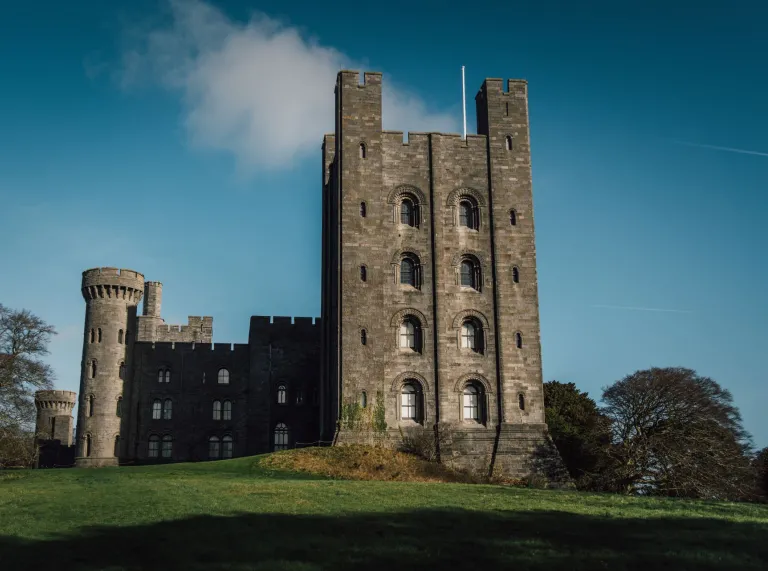
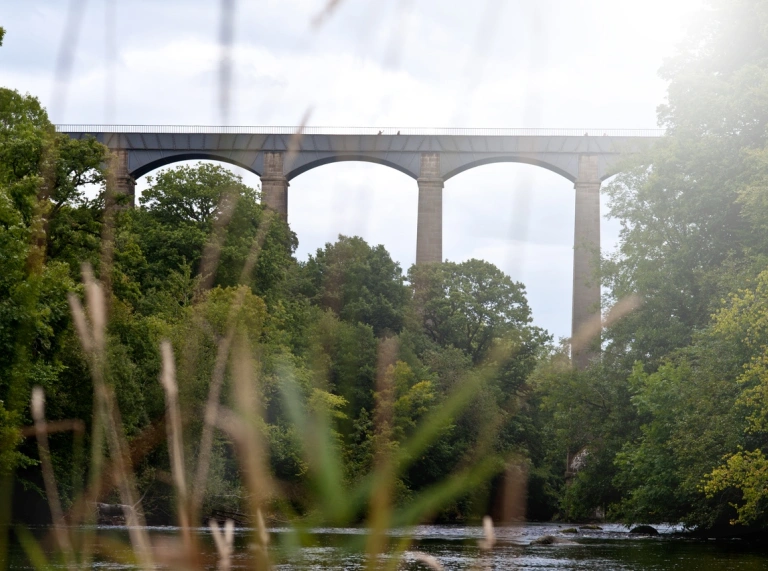
Snowdonia Slate Trail is an 83 mile (134 km) walking route that passes through the industrial landscape and slate villages in Snowdonia. It starts at Porth Penrhyn and finishes in Bethesda and the route includes Beddgelert, Llanberis, Nantlle Valley and Penmachno.
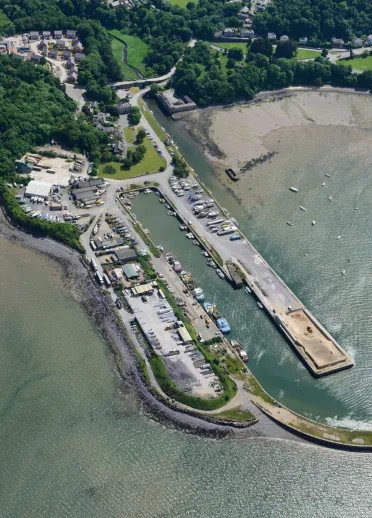
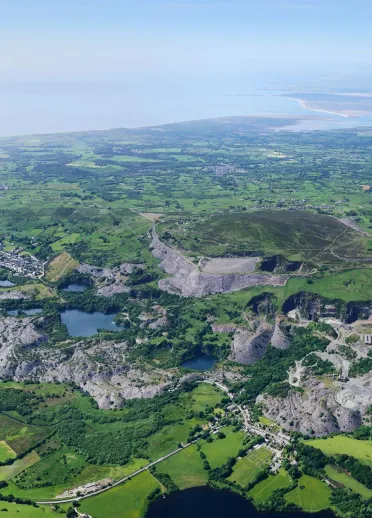
Talyllyn Railway is another of the famous Great Little Trains of Wales which was built to take slate from Bryn Eglwys Quarry to Tywyn. Quarryman’s cottages were also built in the village of Abergynolwyn.
Zip World Llechwedd is home to a former slate mine and today visitors go 152 metres (500 ft) underground by Europe's steepest cable railway on the Deep Mine Tour. Clients will discover more about the life of the Victorian slate miner who spent 12 hours a day, six days a week underground and created their own unique culture, and learn about the founder and owner John Whitehead Greaves.
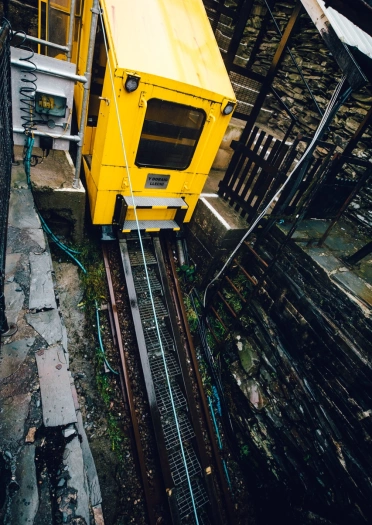

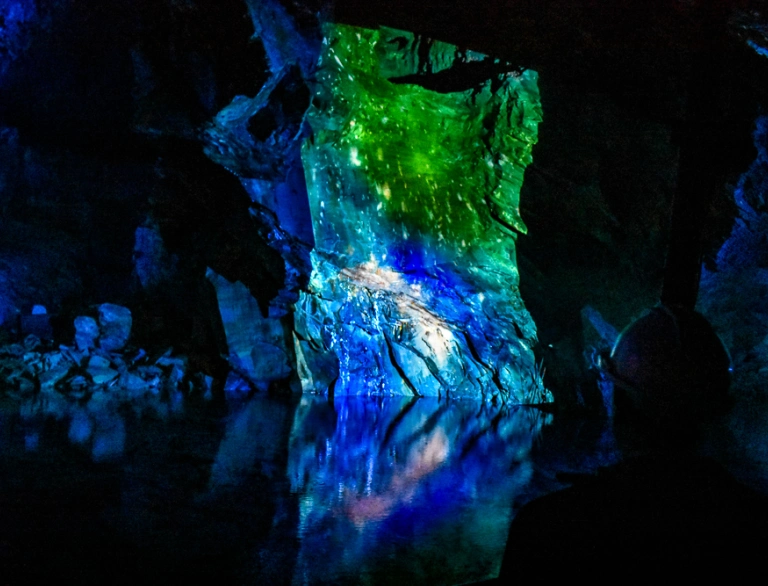
Also on site is Titan 2. Visitors will have the opportunity to see the stunning industrial landscape and quarry mills around 427 metres (1,400 ft) above sea level towards Blaenau Ffestiniog and Snowdonia. The 45min tour includes exploring the landscape in an army truck before kitting up for the four person zip line which travels over stunning views. The whole experience lasts around 1hr 30min.
Caverns is an underground adventure deep in the slate cavern where clients will tackle the 3hr course weaving through tunnels and chasms whilst traversing along rope bridges and tightropes, and travelling on zip lines along the way.
Clients may also want to experience Bounce Below - a series of nets deep in the cavern, or for a shorter zip experience, travel down Big Red. Located deep in a disused cavern accessible by Europe's steepest cable railway, is Underground Golf, an 18-hole course in the world's first underground cave.
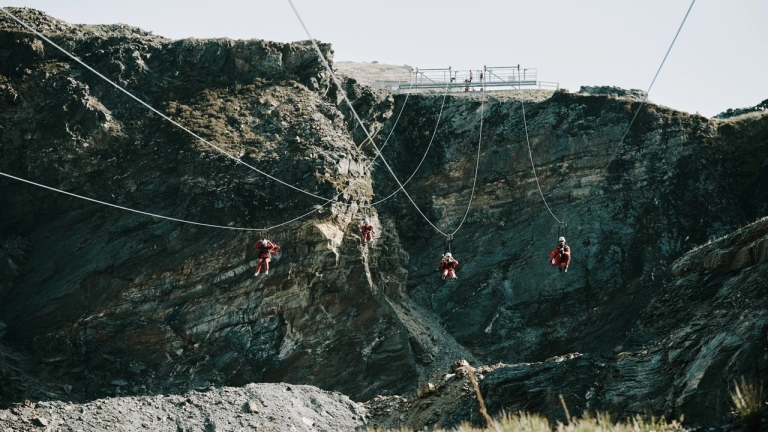
Zip World Penrhyn Quarry, Bethesda was once the largest slate quarry in the world employing over 3,000 men. Slate was transported to Porth Penrhyn by the coast on a narrow gauge railway, one of the first railway lines. It was here where one of the largest disputes in Britain took place between 1900 and 1903. Today it is the setting of Zip World Velocity 2, where visitors can travel over 100mph (161 kmph) whilst enjoying views of Snowdonia National Park and they can learn about the history whilst taking a ‘Quarry Tour'. Other adventures on site include Quarry Karts, Quarry Flyer and Aero Explorer.
